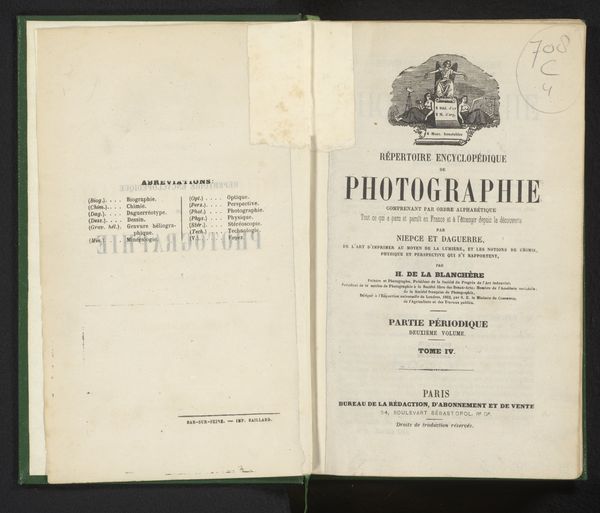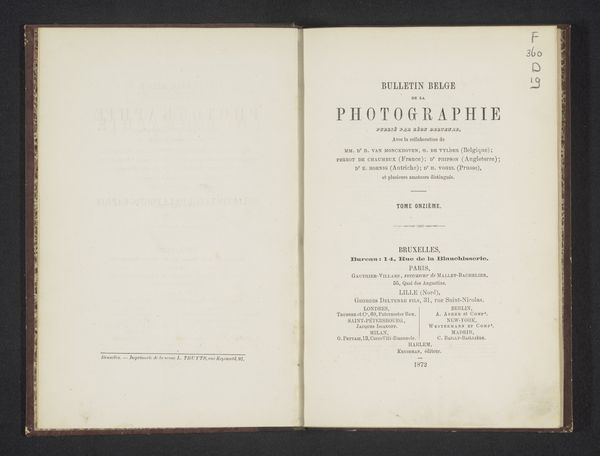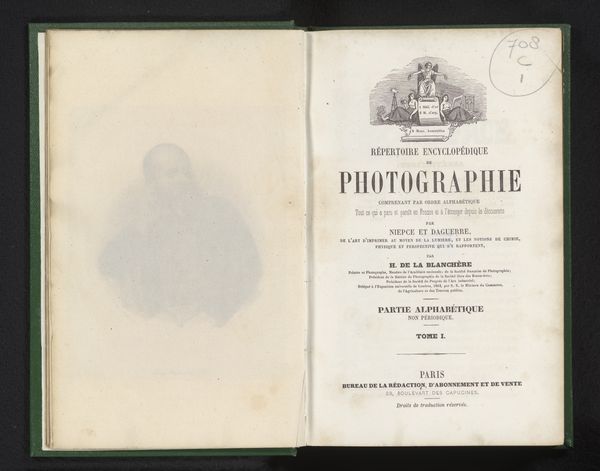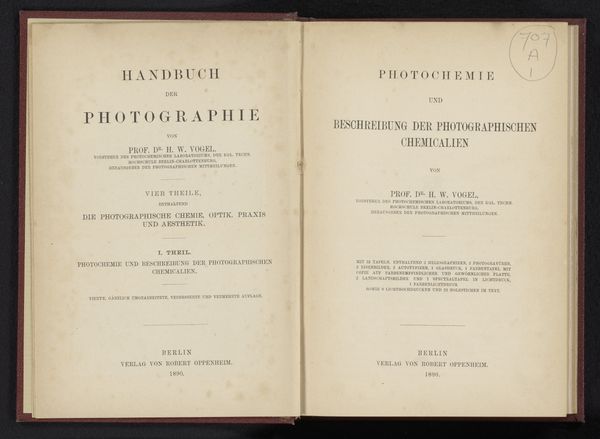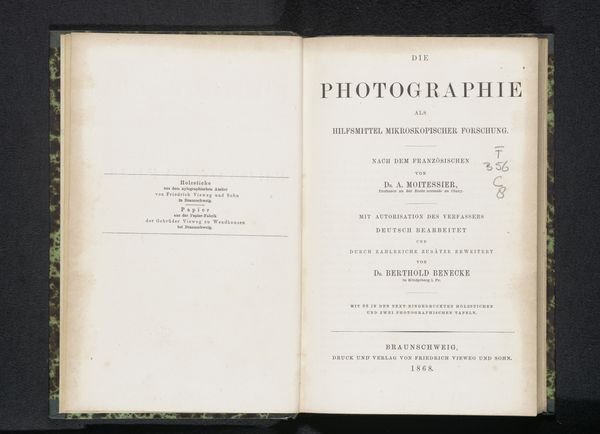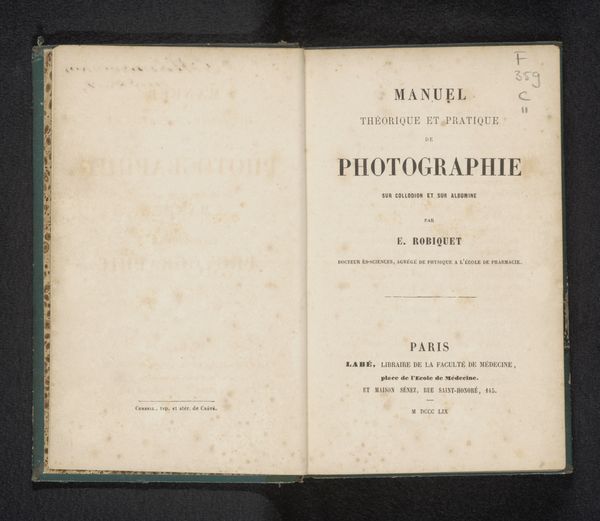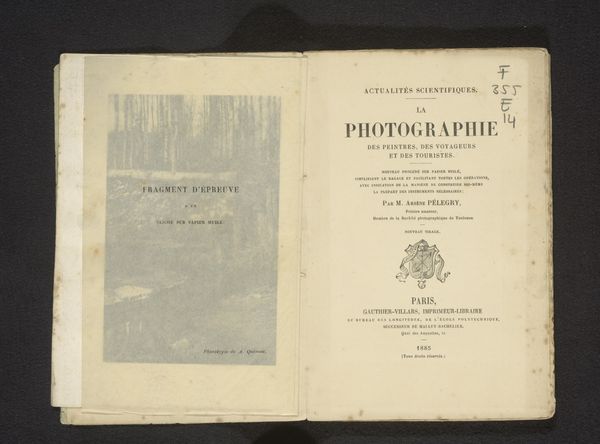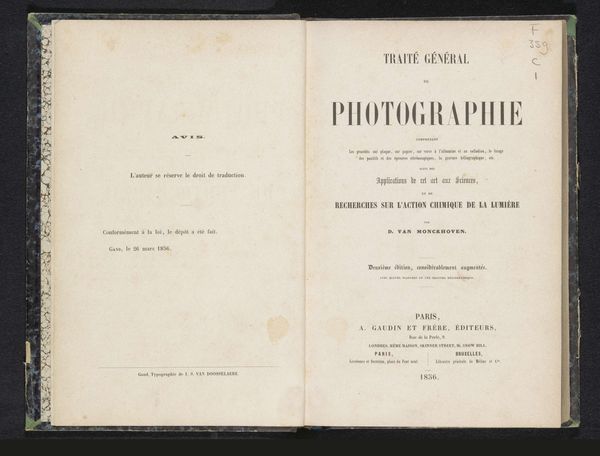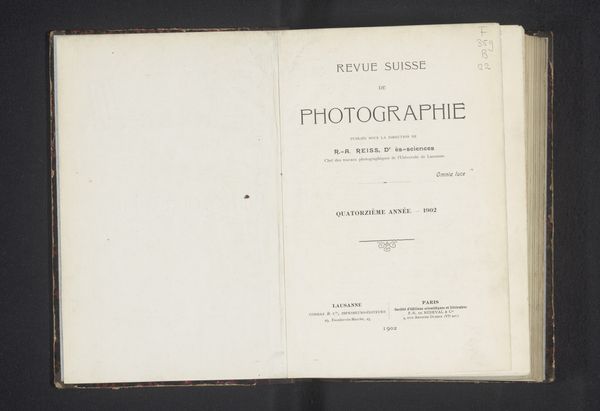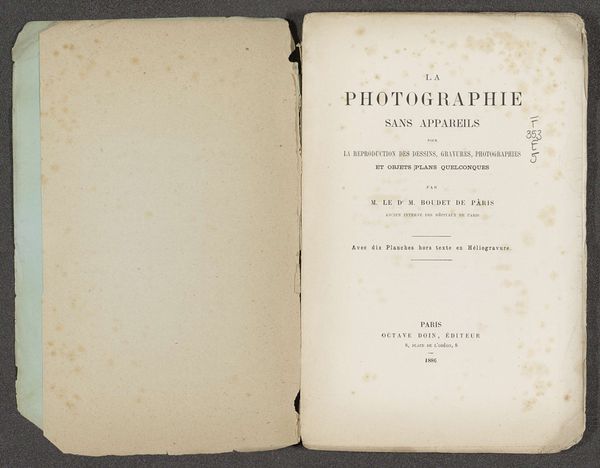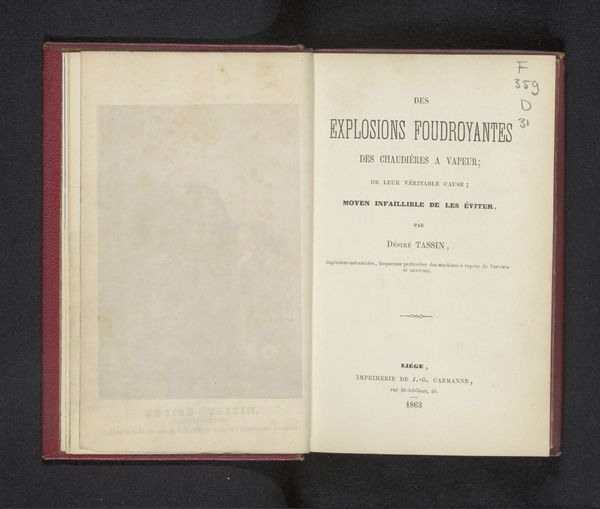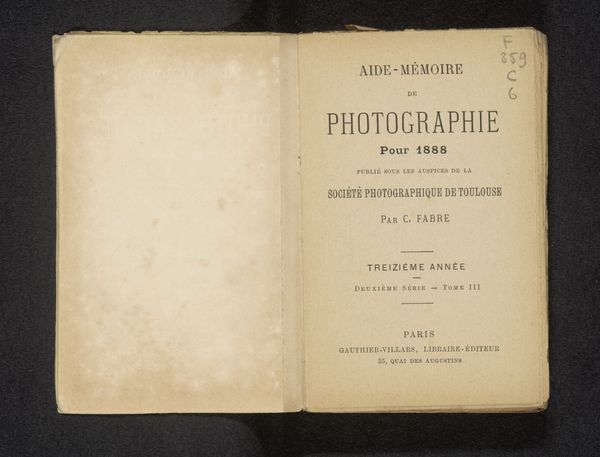
Répertoire encyclopédique de photographie : comprenant par ordre alphabétique tout ce qui a paru et paraît en France et à l'étranger depuis la découverte par Niepce et Daguerre. Tome 2 c. 1862 - 1866
0:00
0:00
print, textile, photography
# print
#
textile
#
photography
#
history-painting
Dimensions: height 220 mm, width 142 mm, thickness 32 mm
Copyright: Rijks Museum: Open Domain
Curator: Here, we see a photograph of an open book titled "Répertoire encyclopédique de photographie…" It was compiled by H. de la Blanchère sometime between 1862 and 1866. It looks to be a catalogue of photographic techniques and equipment of the time. Editor: My first impression is of something both delicate and meticulous. The typography is beautifully crisp and creates an immediate sense of order and scientific rigor, which is underscored by the facing list. I find it aesthetically quite pleasing, the balance of text and the very restrained ornamentation. Curator: Indeed. Consider that photography at this time was still quite new. Blanchère was contributing to its understanding, public knowledge and development as a technical and artistic pursuit. This wasn’t just an aesthetic object; it was actively shaping the public perception and usage of photography. The illustrations on the title page support the symbolic nature of photography at the time, bridging art and science with representations of muses atop a device representing photography. Editor: I appreciate how the graphic elements on the title page—the cherubs with drafting tools and scientific instruments, for example—harmonize to present photography as something ennobling, practically elevating. In that respect, it contrasts nicely with the text listing equipment and materials in a more grounded and utilitarian way. There’s this clear effort to dignify a medium still struggling for recognition. Curator: Exactly! The placement of Niepce and Daguerre's names is an acknowledgment and a strategic branding tactic as well. Invoking those pioneers associated Blanchère's work with the scientific authority those figures were already accruing. We can also observe how the publisher, Bureau de la Rédaction, sought to build authority with its location on Boulevard des Capucines. Editor: Yes, you are right; it seems every element works to give validation. Reflecting on the book’s design and contents, I think I appreciate even more the thought and skill that were applied to elevating photography as an art. Curator: Yes, this snapshot, not just into the techniques of early photography, but also into the era's social and intellectual currents, underscores the transformative power images wield in our collective memory.
Comments
No comments
Be the first to comment and join the conversation on the ultimate creative platform.
